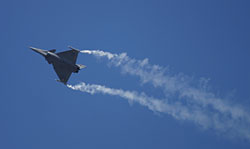 Formulation is an area in which SEE and LCC are particularly skilled. Formulation is an area in which SEE and LCC are particularly skilled.
A research office that includes monitoring of technological development is capable of finalising a new mix to solve a specific problem.
SEE and LCC produce mixes according to known standards or to the client's specifications, or any special mix for a particular application.
Adherisation is at the leading edge of technology at SEE and LCC. A research office that includes monitoring of technological development, staffed by experienced specialists, makes it possible to control the process – and on this depends the length of time adherised parts will last and their performance.
Adherisation involves "sticking" rubber or plastic to any metal, ceramic, fabric, composite material, etc.
MOULDING is one of the major specialities of our two companies. Substantial production capacity with a number of 3 m presses and machines of all sizes, etc.) enables us to respond rapidly to heavy demand.
Fabric backing has contributed to the reputation of the two companies as having the technical skill to solve all sorts of problems (fire screen seals, use in aircraft jet engines, etc.). Small parts may be manufactured manually or, at the other end of the scale, large quantities may be produced.
Extrusion involves the manufacture of continuous section. SEE and LCC also have the equipment to manufacture small and medium-sized runs.
Rolls are manufactured to meet considerable demand from paper-making, the iron and steel industry, printing works, etc. (from very small rolls for computer printers up to rolls measuring 6 metres).
Polyurethane casting is used to produce large, complex parts of any shape. It is also used for coating printed circuits, etc.
Inflatable seals are the result of work carried out by the research and development office. The particular feature of these seals is that they expand to shape in their housing. They make it possible to seal substantial gaps over long lengths. Examples include high-speed train doors, equipment and doors for chemistry laboratories (security against viruses), the nuclear sector, aviation, the food sector, etc.
|

